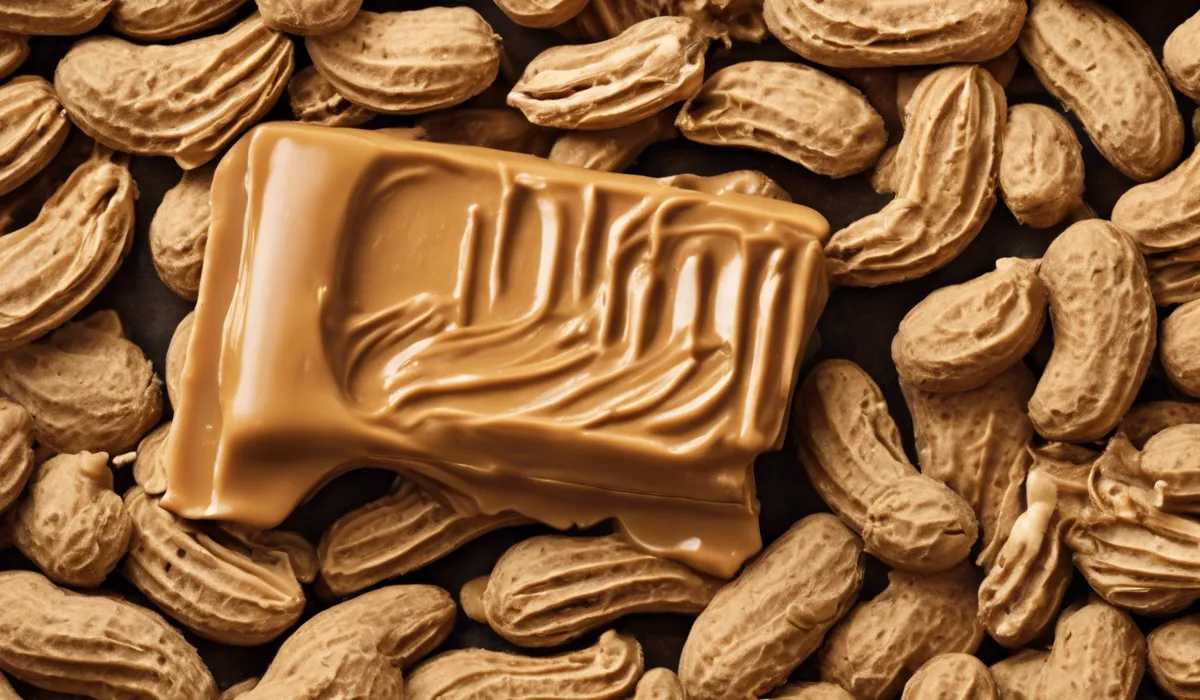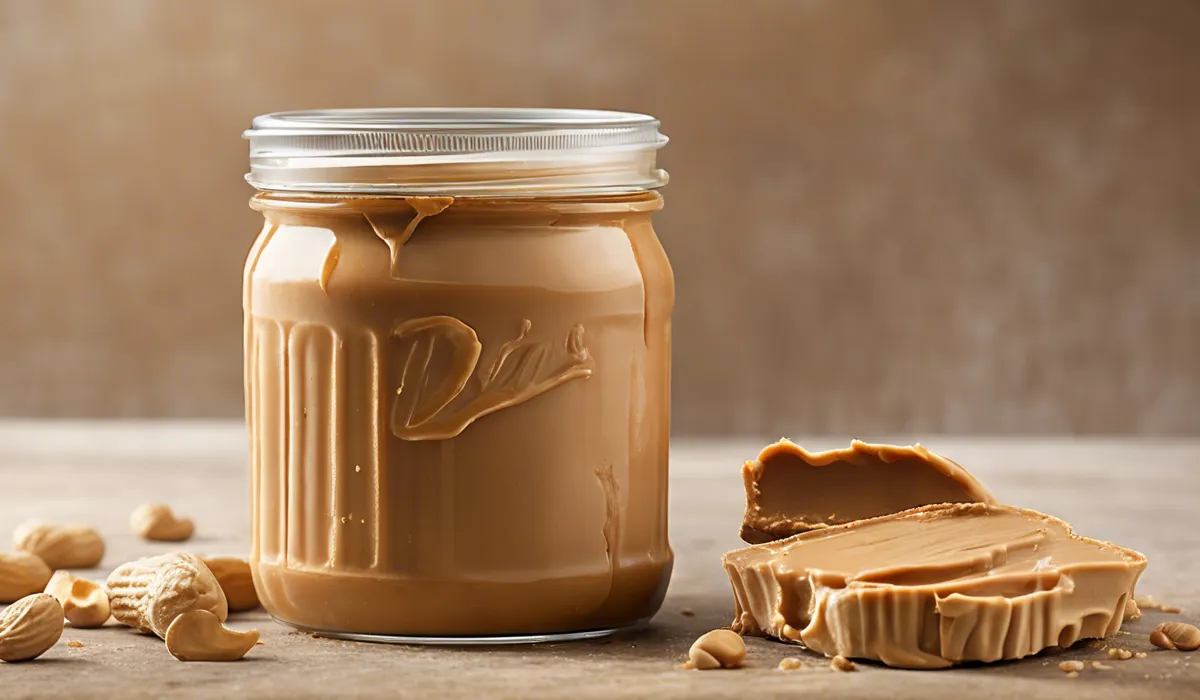Peanut butter can contain mold, specifically aflatoxins, which are produced by Aspergillus fungi. However, commercial peanut butter brands follow strict safety standards to minimize this risk. Always check for visible mold and discard if present.
Understanding Peanut Butter Production and Mold Risks

How Peanut Butter Comes to Be?
Peanut butter starts its journey as peanut plants that grow in warm climates. Farmers harvest the peanuts and dry them to reduce moisture, which is a critical step in preventing mold.
After drying, peanuts are roasted, which not only imparts the rich flavor we love but also helps to kill any existing mold spores. The roasted peanuts are then ground into a paste, which becomes the peanut butter we find on store shelves.
Peanut Cultivation and Harvesting Conditions
Peanuts thrive in warm, sandy soil and require several months of hot weather to grow. Harvest time is crucial as peanuts need to be dug up and dried properly to prevent mold growth.
If the peanuts are left in the ground too long or not dried sufficiently, they can become susceptible to mold, particularly the harmful Aspergillus fungi.
Processing Steps to Combat Contaminants
During processing, peanuts go through several steps to minimize contaminants. After roasting, they undergo a process called blanching, where the skins are removed since they can harbor mold and impurities.
The peanuts are then cooled in a sterile environment before being ground. Modern facilities use high standards of cleanliness to ensure the final product is safe.
Aflatoxins and Mold Concerns
Aflatoxins are toxic substances produced by certain types of mold, like Aspergillus, which can contaminate peanuts.
These toxins are resistant to heat and can survive the roasting process. That’s why peanut butter manufacturers must test for aflatoxins to ensure levels are below the safety limits set by authorities.
FDA Regulations on Peanut Butter
The FDA has strict regulations for peanut butter production. These include limits on the amount of aflatoxins allowed in the final product, guidelines for the manufacturing process, and requirements for labeling.
Companies must adhere to these rules to ensure that the peanut butter you buy is safe and free of harmful mold.
Mold Prevention and Shelf Life in Peanut Butter

Storage Essentials to Ward Off Mold
Keeping peanut butter in a cool, dry place helps prevent mold. Exposure to moisture and warm temperatures can encourage mold growth, so it’s best to store your peanut butter in the pantry or, for longer shelf life, in the fridge once opened.
Science Behind Peanut Butter’s Resistance to Mold
Peanut butter’s composition, which is high in fat and low in moisture, naturally inhibits mold growth.
Mold requires moisture to thrive, and the lack of water in peanut butter makes it an unfriendly environment for mold.
Preservatives and Oils Extend Freshness
Some peanut butter brands add preservatives to extend shelf life. Natural oils in peanut butter also act as a barrier to moisture, helping to keep it fresh and free from mold for longer periods.
Consumer Tips for Mold-Free Peanut Butter
At home, always use clean utensils to scoop out peanut butter to prevent cross-contamination.
If you prefer natural peanut butter, be sure to stir it thoroughly before use, as oil separation can occur and potentially increase the risk of mold if not blended back in.
What To Do If You Find Mold in Peanut Butter?

Detecting Mold in Your Jar
If your peanut butter smells off or you see any unusual spots or discoloration, it could be mold.
Mold in peanut butter might not always be visible on the surface, so if in doubt, it’s best to err on the side of caution and avoid consuming the product.
The Risks of Eating Moldy Peanut Butter
Consuming moldy peanut butter can be harmful. Mold can produce toxins that may lead to health issues such as allergic reactions or respiratory problems. If you suspect your peanut butter is moldy, do not eat it.
Immediate Steps After Finding Mold
If you find mold in your peanut butter, stop using it immediately. Do not try to scoop out the moldy part and use the rest as mold can spread in invisible threads throughout the product.
When It’s Time to Say Goodbye to Your Peanut Butter
When mold is present, or if the peanut butter is past its expiration date and shows any signs of spoilage, it’s time to discard it.
Additionally, if the texture, color, or smell seems abnormal, it’s safer to throw it away.
Disposing of Moldy Peanut Butter Properly
To dispose of moldy peanut butter, seal it in a plastic bag before throwing it in the trash. This will prevent the spread of mold spores to other foods or surfaces. Clean the jar thoroughly with hot, soapy water before recycling it.
FAQs About Mold in Peanut Butter
Can peanut butter contain mold?
Yes, peanut butter can contain mold, such as aflatoxins, which are produced by Aspergillus fungi, but commercial brands maintain strict safety standards to minimize this risk.
Is it safe to eat commercial peanut butter with regards to mold?
Commercial peanut butter is generally safe to eat as manufacturers adhere to safety regulations to limit mold contamination, but always inspect for any signs of spoilage before consumption.
How can I identify mold in my peanut butter?
Check for any unusual changes in color, texture, or smell, and discard the peanut butter if you notice any visible mold or spoilage.
What should I do if I find mold in my peanut butter?
If you find mold in your peanut butter, it’s best to discard the entire container to avoid the risk of consuming aflatoxins.
Do natural or organic peanut butter brands have a higher risk of mold?
Natural or organic peanut butter may have a higher risk of mold since they often contain fewer preservatives, so it’s important to store them properly and consume them by the use-by date.
Final Thoughts
While peanut butter can harbor mold, specifically aflatoxins from Aspergillus fungi, commercial brands implement rigorous safety protocols to minimize this health hazard.
Consumers should be vigilant, inspecting for visible mold and discarding any contaminated peanut butter to ensure safety.
